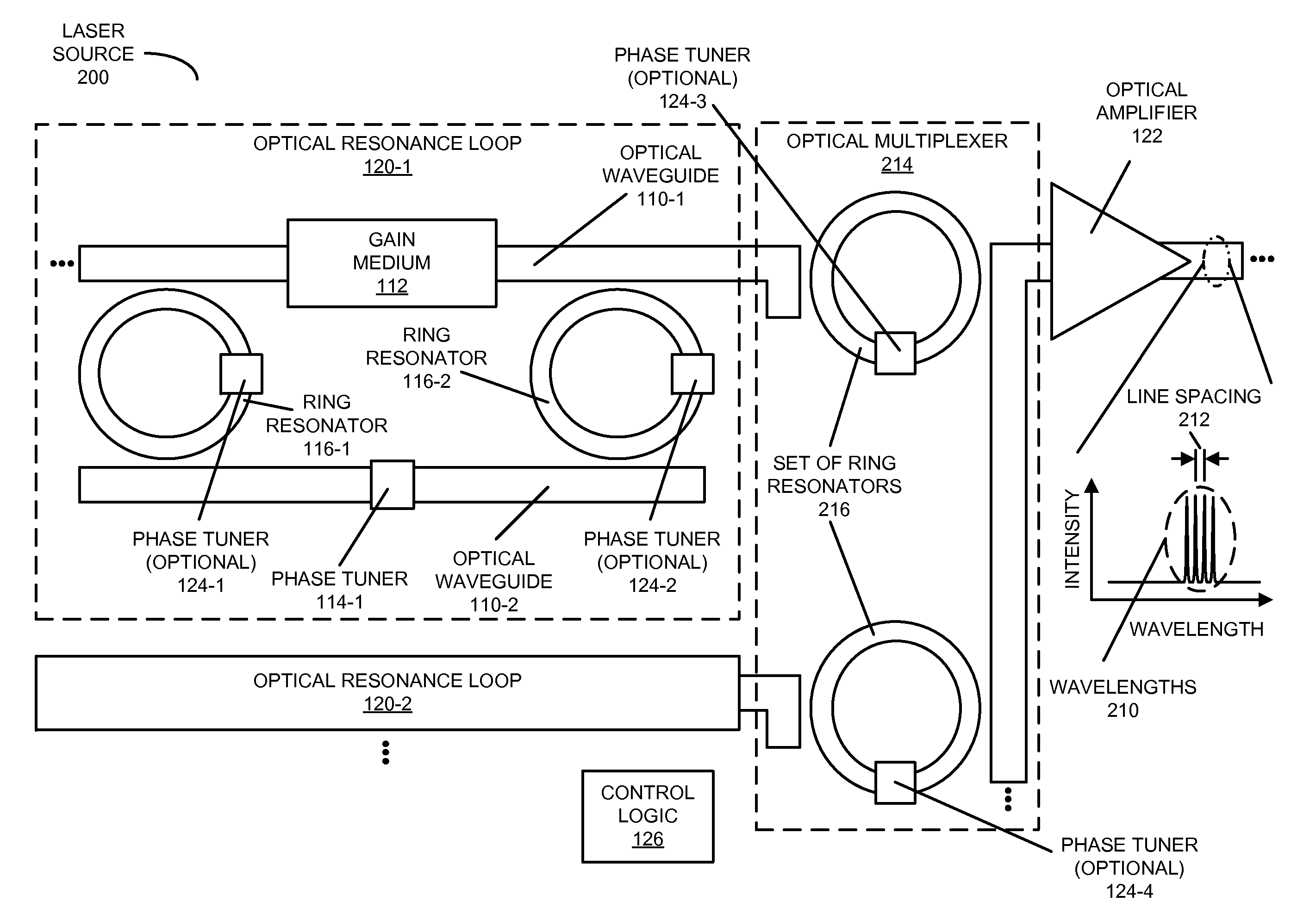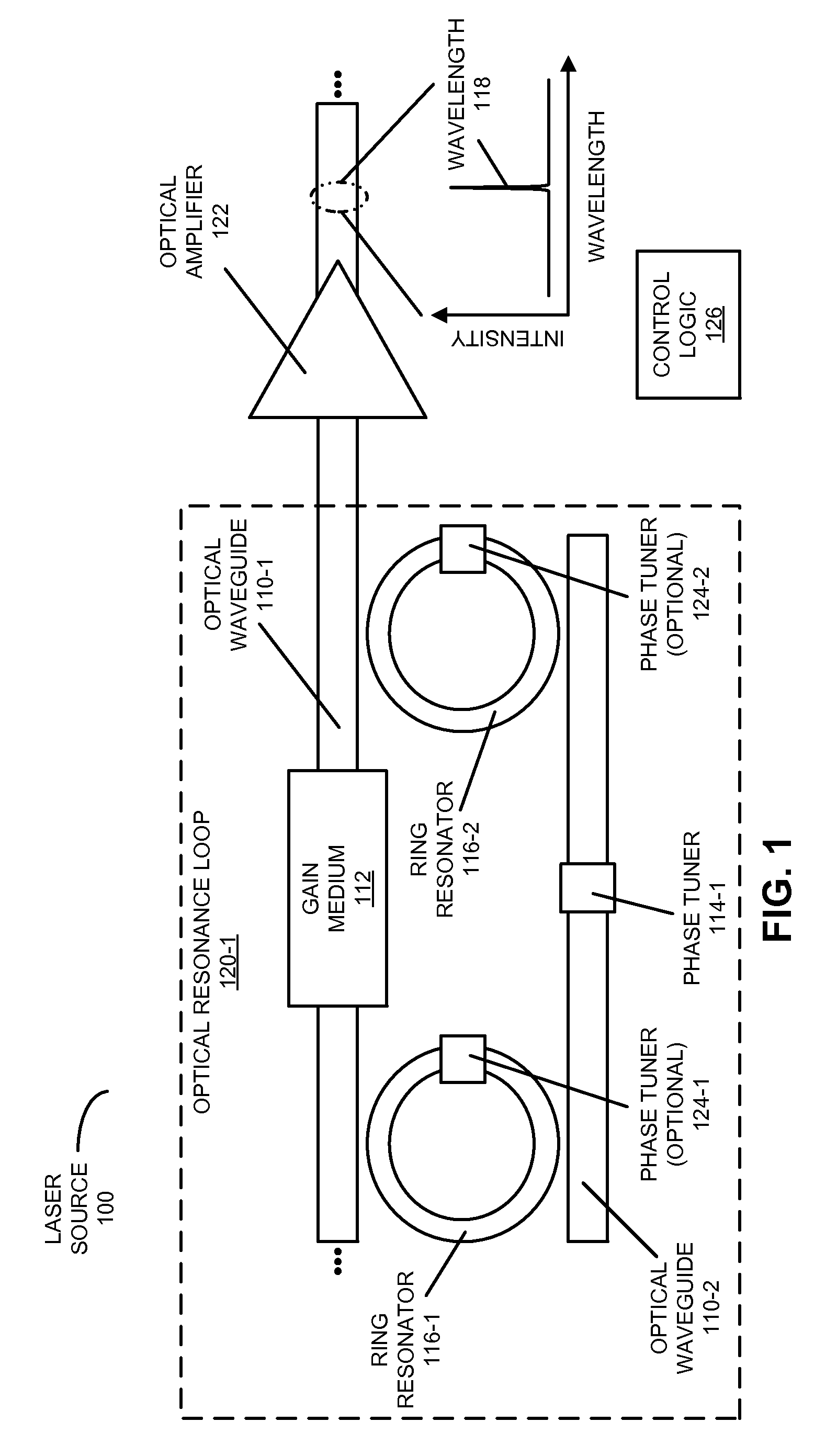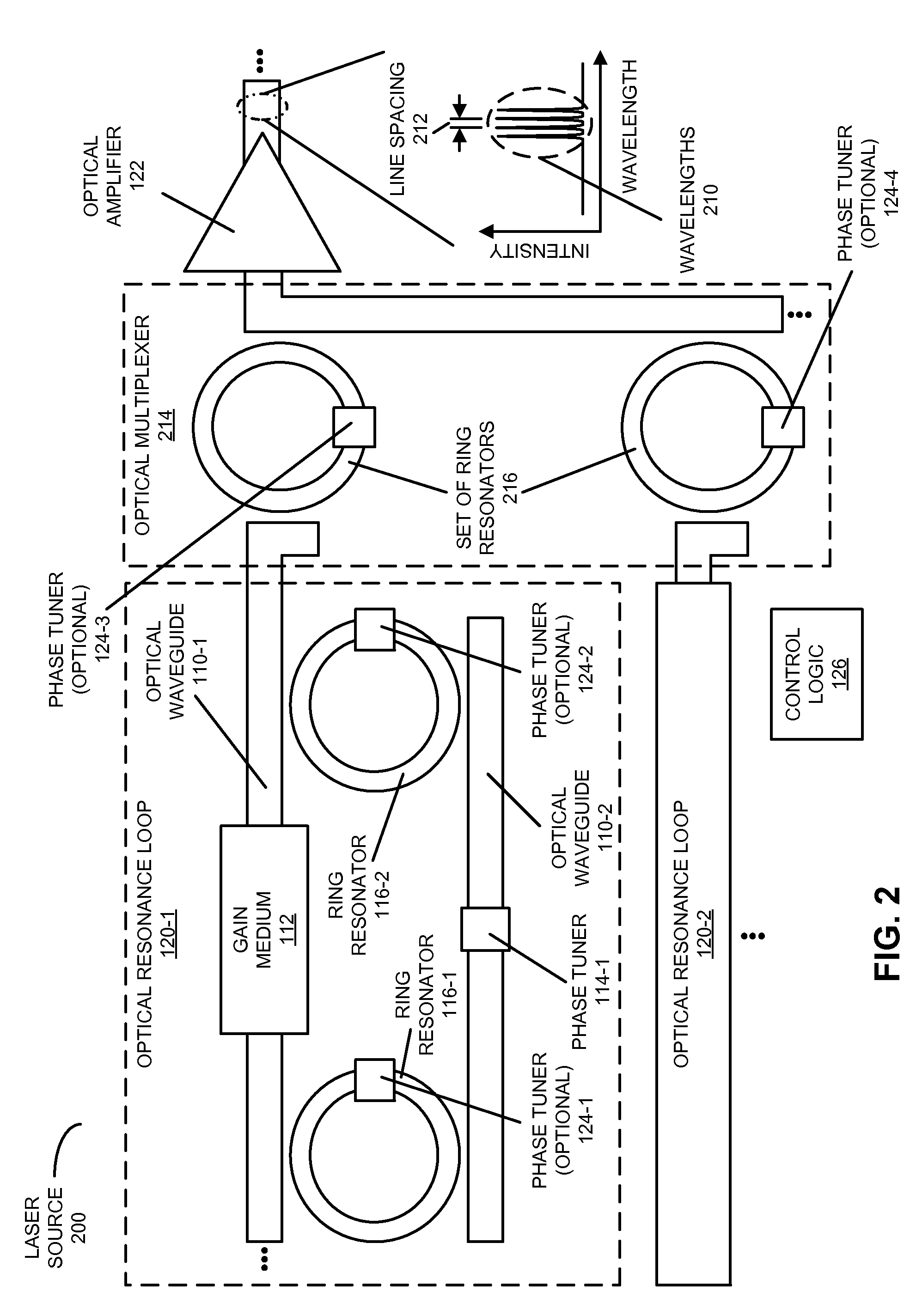Monolithic laser source using ring-resonator reflectors
a monolithic laser and reflector technology, applied in the field of laser sources, can solve the problems of high cost, difficult to achieve low-cost wdm laser sources, and difficult to implement wdm silicon-photonic,
- Summary
- Abstract
- Description
- Claims
- Application Information
AI Technical Summary
Problems solved by technology
Method used
Image
Examples
Embodiment Construction
[0025]Embodiments of a laser source, a system that includes the multiple-wavelength laser source, and a technique for outputting an optical signal using the laser source are described. In the laser source, a first optical waveguide includes a gain medium, and a second optical waveguide includes a phase tuner which adjusts a phase value of the phase tuner to specify the wavelength of the laser source. Furthermore, the laser source includes a first ring resonator and a second ring resonator, which, respectively, are optically coupled to the first optical waveguide and the second optical waveguide at opposite ends of the laser source. In particular, coupling wavelengths of the first and second ring resonators may match at least a wavelength of the optical signal, thereby defining an optical resonance cavity in the laser source and selecting a laser mode of the laser source which is associated with the wavelength. Additionally, the laser source includes an optical amplifier that receive...
PUM
 Login to View More
Login to View More Abstract
Description
Claims
Application Information
 Login to View More
Login to View More - R&D
- Intellectual Property
- Life Sciences
- Materials
- Tech Scout
- Unparalleled Data Quality
- Higher Quality Content
- 60% Fewer Hallucinations
Browse by: Latest US Patents, China's latest patents, Technical Efficacy Thesaurus, Application Domain, Technology Topic, Popular Technical Reports.
© 2025 PatSnap. All rights reserved.Legal|Privacy policy|Modern Slavery Act Transparency Statement|Sitemap|About US| Contact US: help@patsnap.com



